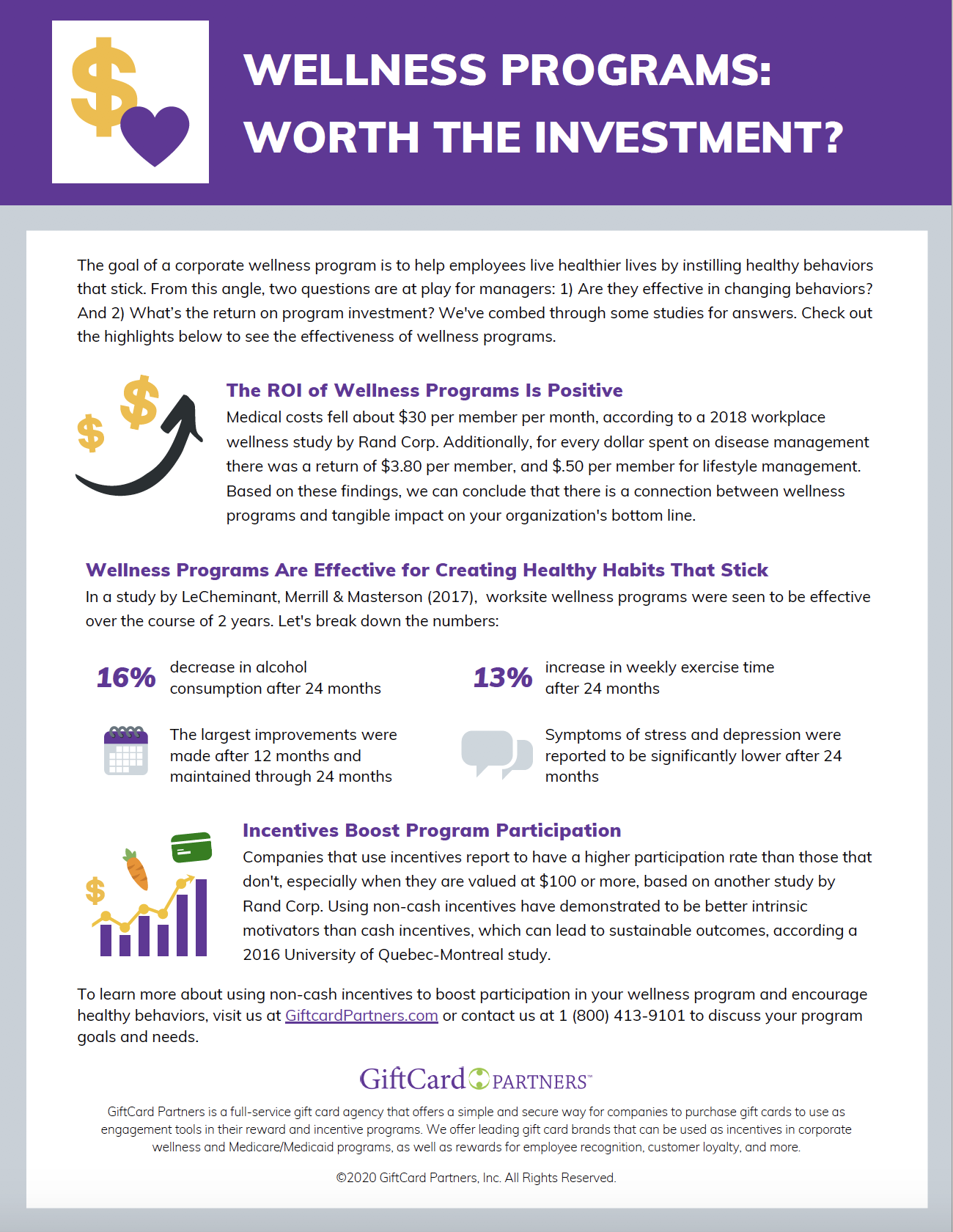In the U.S., 4 out of 5 companies with over 50 employees offer some sort of corporate wellness program, according to a report by The RAND Corporation (sponsored by U.S. Department of Labor and the U.S. Department of Health and Human Services).
Some researchers attribute the rise of corporate wellness to Johnson & Johnson’s Live for Life Program in the 1970s, where they made it their sole mission to have the healthiest employees in the world. Since then, a number of evaluation studies have shown that their program was associated with improved employee health, reduced inpatient care expenditures, decreased employee absenteeism, and better employee attitudes.
Corporate wellness programs are designed to help employees learn healthier behaviors that develop into long term habits, which means program designers and managers need to ask themselves two questions: 1) Are they effective in changing behaviors? and 2) What’s the return on program investment?
(Click to download)



![Workplace Wellness Programs: Are They Worth the Investment? [Infographic]](https://www.giftcardpartners.com/hubfs/Blog_Images/CHW%20Info_Blog-fade.jpg)






